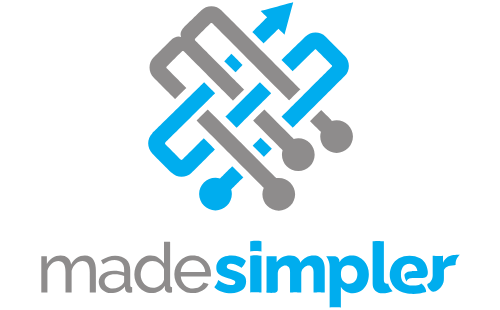Digital marketing is a complex field with many moving parts. At Made Simpler, we’ve broken it down into the 4 Cs of digital marketing: Content, Communication, Conversion, and Customer.
These four pillars form the foundation of successful online marketing strategies. In this post, we’ll explore each of these elements and show you how to leverage them for your business growth.
What Makes Content King in Digital Marketing?
The Power of Valuable Information
Content reigns supreme in digital marketing. High-quality, relevant content transforms a business’s online presence. It answers questions, solves problems, and provides value to your audience. When you consistently deliver useful information, you build trust and authority in your field. This trust translates into brand loyalty and, ultimately, conversions.

A study by the Content Marketing Institute revealed that 58% of B2B marketers say content marketing helped them generate sales/revenue in the last 12 months, up from 42% the previous year. This statistic underscores the importance of investing in content creation.
Diverse Content Types for Maximum Impact
Different audiences consume information in various ways. That’s why it’s essential to diversify your content portfolio. Blogs remain a staple, with companies that blog receiving 97% more links to their websites (according to HubSpot).
Video content surges in popularity. YouTube reports that users watch over a billion hours of video daily on their platform. Infographics are shared three times more on social media than other types of content (as noted by Massplanner).
Podcasts offer another avenue for reaching your audience. Edison Research states that 41% of Americans listen to podcasts monthly, presenting a significant opportunity for brands to connect with listeners.
Strategic Planning for Content Success
A haphazard approach to content creation won’t suffice. You need a solid strategy. Start by defining your target audience and understanding their pain points. Use tools like Google’s Keyword Planner to identify topics your audience searches for.
Create a content calendar to ensure consistent publishing. HubSpot’s research suggests that if your blog isn’t at least a year old, you should aim to publish 6-8 posts a month around a few important and promising topics.
SEO: Making Your Content Discoverable
Even the best content becomes useless if no one finds it. That’s where Search Engine Optimization (SEO) comes in. Incorporate relevant keywords naturally into your content. Focus on long-tail keywords, which account for 70% of all web searches (according to SEO Platform).
Don’t neglect technical SEO. Ensure your website loads quickly – Google reports that 53% of mobile users abandon sites that take longer than three seconds to load. Use descriptive meta titles and descriptions, and structure your content with header tags for better readability and SEO performance.
As we move forward, it’s clear that content forms the foundation of digital marketing. However, creating great content is only half the battle. The next crucial step involves effectively communicating this content to your audience. Let’s explore how to master the art of communication in the digital age.
How to Master Communication in Digital Marketing
Craft a Multi-Channel Strategy
Effective communication forms the lifeblood of digital marketing. It’s not just about broadcasting your message; it’s about creating meaningful connections with your audience across multiple channels. A study by Salesforce found that 76% of customers expect consistent interactions across departments. This means your communication strategy must be cohesive across all channels.

Identify where your audience spends their time online. Are they active on Instagram, LinkedIn, or do they prefer email communication? Once you know this, tailor your message to each platform while maintaining a consistent brand voice.
For example, if you’re a B2B company, LinkedIn might be your primary social channel. Here, you could share industry insights and company news. Simultaneously, you could use email marketing for more in-depth content and personalized offers.
Maximize Social Media Engagement
Social media provides a powerful tool for two-way communication with your audience. According to Sprout Social, 57% of consumers will follow a brand to learn about new products or services. But it’s not enough to just post content; you need to engage.
Respond promptly to comments and messages. Hootsuite reports that 79% of consumers expect a response within 24 hours when reaching out to brands on social media. Use social listening tools to monitor and track social media conversations related to a specific brand or topic.
Create content that encourages interaction. Ask questions, run polls, or host live Q&A sessions. User-generated content campaigns can also boost engagement. Starbucks’ #RedCupContest on Instagram received more than 1,200 submissions, of which they picked 13 hand-drawn white designs against a red background created by customers.
Perfect Email Marketing
Despite the rise of social media, email remains a crucial communication channel. Campaign Monitor reports that email marketing generates $44 for every $1 spent, making it one of the most effective digital marketing tools.
Personalization is key in email marketing. Segment your email list based on factors like past purchases, browsing behavior, or demographics. Then, tailor your content to each segment. A study by Experian found that personalized emails deliver 6x higher transaction rates.
Keep your emails mobile-friendly. Litmus reports that 46% of all email opens occur on mobile devices. Use responsive design and keep your subject lines short and punchy.
Elevate Customer Service in the Digital Age
In the digital world, customer service is a critical part of your communication strategy. According to Zendesk, 50% of customers switch to a competitor after one bad experience. On the flip side, 77% of customers are more loyal to companies that offer top-notch service.
Implement chatbots for 24/7 customer support. They can handle simple queries, freeing up your team to deal with more complex issues. But ensure there’s always an option to speak to a human. A study by CGS found that 86% of consumers prefer to interact with a human agent.
Use social media for customer service too. Many customers turn to platforms like Twitter to voice concerns. Responding quickly and effectively can turn a potential PR disaster into a showcase of your excellent customer care.
Communication in digital marketing builds relationships, provides value, and creates a seamless experience across all touchpoints. As we move forward, it’s important to understand how these communication efforts translate into tangible results. In the next section, we’ll explore the art of conversion and how to turn your engaged audience into loyal customers.
How to Boost Your Conversion Rates
Craft Landing Pages That Convert
Your landing page often provides the first impression of your business to potential customers. You must make it count. The average landing page conversion rate across industries stands at 4.02%. However, the top 25% of landing pages convert at 5.31% or higher.

To achieve these higher conversion rates, you should focus on clear, compelling headlines that address your visitor’s pain points. Use contrasting colors for your call-to-action (CTA) buttons to make them stand out. Red CTAs have boosted conversion rates by 21% compared to green CTAs (according to a study).
Include social proof elements like customer testimonials or trust badges. A recent survey revealed that 87% of consumers read online reviews for local businesses in 2020.
Optimize Your Call-to-Action Strategy
Your CTA can significantly impact your conversion rates. Avoid generic phrases like “Submit” or “Click Here”. Instead, use action-oriented, value-focused language. For example, “Get Your Free Trial” or “Start Saving Today” prove more compelling.
Placement matters too. Using video on landing pages can increase conversions by as much as 86%. If you use video, place your CTA at the end for maximum impact.
Consider using multiple CTAs throughout your page, especially for longer content. Anchor text CTAs have increased conversion rates by 121% compared to banner CTAs (according to a marketing software company).
Leverage A/B Testing for Continuous Improvement
A/B testing proves crucial for optimizing your conversion rates. Even small changes can lead to significant improvements. For instance, a project management software company increased conversions by 102.5% simply by changing a single line of copy on their homepage.
Test one element at a time to accurately measure its impact. This could include your headline, CTA button color, form length, or page layout. Various tools can help you set up and analyze these tests.
A/B testing should become an ongoing process. What works today might not work tomorrow as consumer preferences evolve.
Personalize for Higher Conversions
Personalization can significantly boost your conversion rates. A recent study found that 80% of consumers are more likely to make a purchase when brands offer personalized experiences.
Use data from your CRM and analytics tools to segment your audience and deliver tailored content. This could range from addressing visitors by name in email campaigns to showing different landing pages based on a user’s browsing history.
Dynamic content can also improve conversions. For example, a major e-commerce company’s product recommendations drive 35% of their revenue (according to a consulting firm).
These conversion optimization strategies have helped many businesses achieve remarkable results. By focusing on effective landing pages, compelling CTAs, continuous A/B testing, and personalization, you can significantly improve your conversion rates and drive business growth.
Final Thoughts
The 4 Cs of digital marketing – Content, Communication, Conversion, and Customer – form the foundation of successful online strategies. Each element plays a vital role in creating a comprehensive and effective digital marketing approach. High-quality content attracts and engages your target audience, while effective communication builds relationships and fosters trust.

Conversion optimization turns engagement into tangible results, and a customer-centric approach ensures long-term success and loyalty. The integration of these elements creates a powerful synergy that drives results. Great content fuels communication efforts, which leads to higher conversion rates and improved customer satisfaction.
Made Simpler offers a comprehensive suite of digital marketing services designed to help businesses leverage the 4 Cs effectively. From SEO-optimized blog content to social media management, Made Simpler provides the tools and expertise needed to elevate your digital marketing strategy. Businesses that master these core concepts will thrive in the competitive online marketplace.

